DEMONSTRATING COVID DUE DILIGENCE: Preventing Improvement Orders & Claims
DEMONSTRATING COVID DUE DILIGENCE: Preventing Improvement Orders & Claims
Posted on December 8, 2020
Across Canada, the regulatory agencies responsible for workplace safety and health are including COVID-19 transmission as a high priority employee safety issue and are following up on company protocols during their site inspections.
The risk of COVID transmission should be assessed just the same as you would systematically review any other hazard in your workplace. In the case of COVID, the risk assessment could follow these steps:
a) Make a list of the locations in your facility where your people spend any amount of time within two meters of one another.
b) Add to that list any processes outside of the normal workstations (coffee break, punching in, etc.) where close contact occurs.
c) Estimate, in consultation with your safety committee, the weekly cumulative contact incurred by each close contact. The close contact with the highest exposure time must be the top priority for implementing controls.
d) For each individual instance of close contact, apply the hierarchy of controls. Make every effort to focus on eliminating the need for the close contact entirely. Failing that, physical barriers and air movement controls must be considered. PPE in the form of masks, or masks combined with face shields for extended close contacts, should be included but should not be the entirety of the controls.
To stay ahead of the curve, there are six aspects to a COVID-19 control program that need to be in place to protect people and demonstrate to regulatory agencies that due diligence has been performed.
1. Daily Health Screening
- A process must be developed for the workers to follow with regards to performing a self screening for symptoms prior to arrival to work. Keeping ill workers at home is key to preventing COVID cases. Workers who develop symptoms at work should leave immediately.
- A policy should be in place that requires workers to screen for COVID, stay home when experiencing symptoms (or when they develop symptoms while at work) and isolate as per the current guidance of the regional health authority.
- Not only is it critical that employees receive training on self-screening, managing symptoms and self-isolation, but documenting the topics covered and when training was delivered is necessary to show due diligence. Be sure to keep accurate and up to date records for each employee. If additional training was provided as public health guidance evolved, be sure to include this as well.
2. Physical Distancing
- Physical distancing and physical barriers should be the focus of your control program, with masks being layered in. While a mask can reduce the risk of transmission, it cannot eliminate it entirely. A face covering type mask will not be considered by the health authority when making decisions about isolation instructions.
- A documented procedure must identify what visitors are coming into the facility, what risks are present and how those risks will be controlled.
- Processes for shipping and receiving deliveries (contactless where possible, layers of protection when not).
3. General Facility Hygiene
- Enhanced cleaning procedures based on an assessment of where it is needed should be developed. Confirm that the cleaning product used is on the Health Canada List of Products with Evidence Against COVID-19.
4. General Education and Training
- A training program consisting of the fundamentals (physical distancing, hygiene and etiquette, basic infection processes and control) should be delivered to all staff and documented.
- Supplement any generic COVID-19 health and safety online modules, such as this resource provided by SAFE Work Manitoba, with workplace-specific health and safety training. Reach out to your local CME team for more information on available training courses.
5. Personal Protection Equipment (PPE)
- Not all masks are created equally: the masks provided by the company must be appropriate to the situation. Choose deliberately and seek expert guidance if needed. Documenting the selection criteria and process will support due diligence.
- Workers must be trained on how to correctly put on and take off any gear they wear to protect against COVID, as well as any procedures needed to ensure that their gear is working correctly.
6. COVID Positive Test Result Plan
The CME positive employee tip sheet is an excellent resource for developing a plan, and covers these steps in the process:
- Employee self quarantine
- Confidentiality
- Investigation
- Disinfection
- Contact Tracing
- Communication
CME AND MADE SAFE ARE HERE TO HELP
Our team is dedicated to helping manufacturers through the COVID-19 pandemic; with resources that run the gamut from national advocacy to local shop floor solutions. Contact our team of health and safety experts for manufacturing-specific insights and supports:
